I just saw this on the RV Lifestyle Group today
It is amazing after camping in our RV, (which was new in 23) for only one year of use, and with maybe 10 weeks of 14 weeks of camping I decided to change the anode rod. This is what the anode rod looks like in the hot water tank. I flushed the hat water tank out after removing the rod, it had lots of calcium and sediments in the bottom of the tank. Campground water is not the best water. The picture has a new one next to it so you can see the difference.
Mike’s Answer…
That’s a great and timely question. Hopefully you read my article last fall about being careful not to turn on power to your electric water heater before filling it up with water while de-winterizing it this spring. If not, please read all about it HERE.
Not all electric water heaters have anode rods
From what I can determine, sacrificial anode rods are ONLY in Suburban Water Heaters. Apparently Atwoood and Dometic water heaters don’t have steel tanks and do NOT have anode rods. These should only be fitted with a plastic drain plug. But please comment below if you’ve found something different.
What’s this anode thing?
Well, it’s technically called a sacrificial anode because its job is to sacrifice itself to protect the metal parts of your RV (and home) electric water heater from corrosion. It’s a long metal rod made of aluminum or magnesium that extends into the interior of the tank.
This is needed because any two dissimilar metals in an electrolyte (even potable water) will act like a battery. And that small DC current is enough to start forming ions and leaching them away from your important metallic bits inside of your water heater. Without an anode your electrical water heater tank would fall apart in a few years.
How does it work?
It “takes one for the team,” as it were. As you can see in the diagram, there’s an anode (the sacrificial one) and the cathode (all the other metal parts. The anode provides the source of ions rather than your metal tank. This diverts the corrosion effect away from your metal tank parts, and corrodes itself.
After several years (depending on how much it’s used) this sacrificial “anode” actually sacrifices itself and turns into a shadow of its former self.
How will I know it’s time to be replaced?
You’ll know it when you see it, since most of the anode will be eaten away. But most manufacturers recommend checking and replacing one every three years. However, they’re cheap enough that if you take it apart this spring, I would simply replace it even if the element isn’t too corroded. “An ounce of prevention is worth a pound of cure.”
If you’re handy it’s a pretty straightforward DIY Project.
The anode a great thing to check prior to de-winterizing your RV prior to your first spring trip. First, make sure you get the appropriate anode for your exact water heater. There’s only a few types of RV anodes available, but make sure you have exactly what you need in hand before you start tearing things apart.
The best place to start is to search on the brand and model of your RV water heater. Most of these cost around $10 to $20, so get one now for a rainy day. You’ll thank me later…
What about tools?
Next, make sure you have the right tools. The same multi-tool socket that I recommended for changing your water heater’s electric element will usually work on the anode as well, but check to be sure.
So, go ahead and start gathering your tools right now. Don’t wait until the Friday before your Saturday camping trip to start on it. That’s just asking for trouble…
Don’t forget the teflon tape
Don’t worry about teflon tape electrically isolating your anode rod. Every manufacturer I’ve talked to has recommended teflon on the threads. This in not only to stop any leaks. If you don’t use tape, then the threads can corrode together and you may find the anode rod impossible to remove next time.


Don’t over-torque it!
Remember, the replacement anode may have a gasket and should probably use teflon tape (unless not recommend by the manufacture), and it will have a recommended tightening torque. Don’t overdo the tightening, lest you break something expensive. And be sure to fill up the tank with water and check for leaks BEFORE you turn on the electricity or pull out for your first trip. A leak is easy to fix in your driveway, but not so easy while camped far away from civilization.
OK, everyone. Remember that electricity is a useful and powerful force, so we all need to pay attention to safety precautions while using it.
Let’s play safe out there…. Mike




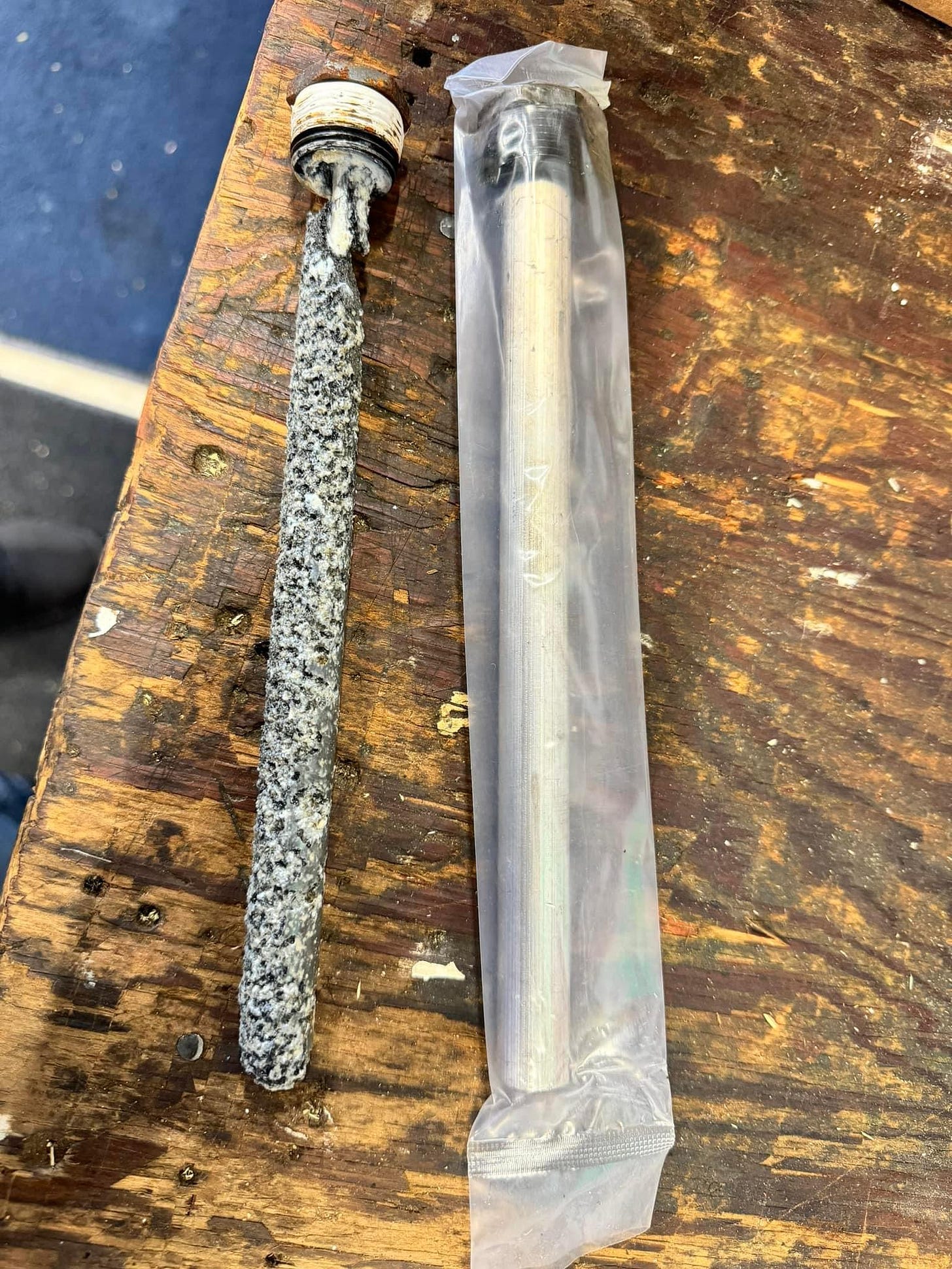
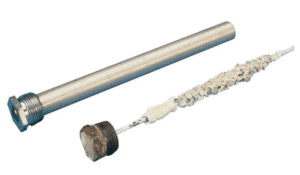
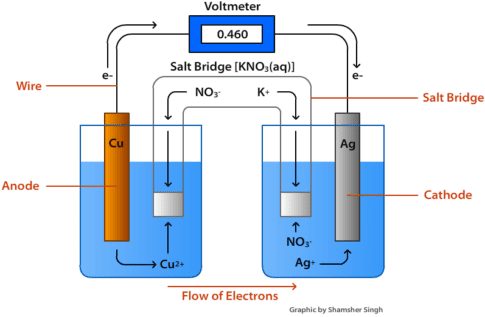
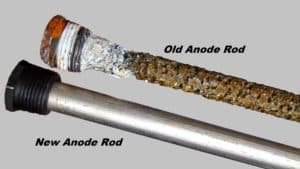

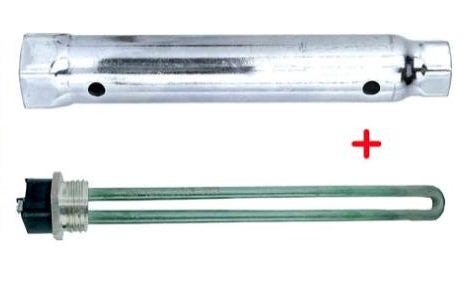

Tip…before removing the anode, release the pressure in the tank by lifting the lever on the pressure release valve!!! Otherwise, as you’re unscrewing the anode, it will shoot out 20 feet, or 2 feet if stopped by your body, and it HURTS!!!…ask how I know!!!😀
I've been using anode rods in my Atwood heater for many years. They always get eaten up. My heater is now over 20 years old and I'm thinking about replacing it, just because of age and not for any other problems. Just one datum, anecdotal. Not sure what to replace it with, still thinking.